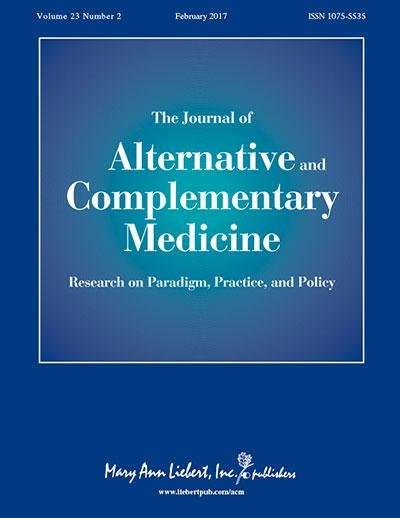Integrative health group visit reduce chronic pain in underserved Spanish-speaking Latinos

Spanish-speaking Latinos suffering from chronic pain, who typically lack access to effective treatments due to insurance, income, and language barriers, showed significant benefits from an Integrative Medical Group Visit (IMGV) approach that was adapted for this population. A description of this promising non-pharmacologic integrated health intervention and its positive impact on pain, fatigue, and depression, are reported in a new study published in JACM, The Journal of Alternative and Complementary Medicine a peer-reviewed publication from Mary Ann Liebert, Inc., publishers. The article is available free on the JACM website.
Paula Gardiner, MD, MPH, family medicine physician at Boston Medical Center, and coauthors from Boston University School of Medicine (BUSM) and Boston University School of Public Health, present the results of their pilot study in which they translated and adapted an IMGV curriculum and tested its effectiveness in a low-income Spanish-speaking Latino population affected by chronic pain. The IMGV model combined complementary and integrative medicine, medical group visits, and mindfulness-based stress reduction techniques to address several health issues such as insomnia, stress, and depression. The model also taught self-management techniques and enhanced patients' social support networks.
The researchers provide a detailed report on the cultural adaptation of the IMGV curriculum and results of the pilot study in the article entitled "The Latino Integrative Medical Group Visit as a Model for Pain Reduction in Underserved Spanish Speakers ." Says Gardiner, who is also an associate professor of family medicine at BUSM: "In the United States, there is a health disparity in the treatment of chronic pain. Medical group visits provide non-pharmacological strategies and provide more access to care."
"The value of this study is both in the treatment and the costs," says JACM Editor-in-Chief John Weeks, johnweeks-integrator.com, Seattle, WA. "Gardiner and her Boston team are not only adding to the non-pharmacologic methods that may be part of an alternate strategy to opioids and other pharmaceuticals in this typically underserved population—they are providing it through a group method that is low cost. The recent National Association of Attorneys General's petition to insurers to start covering more of these non-pharmacologic, integrative services should be steering insurers in this direction."
More information: Oscar Cornelio-Flores et al, The Latino Integrative Medical Group Visit as a Model for Pain Reduction in Underserved Spanish Speakers, The Journal of Alternative and Complementary Medicine (2017). DOI: 10.1089/acm.2017.0132



















